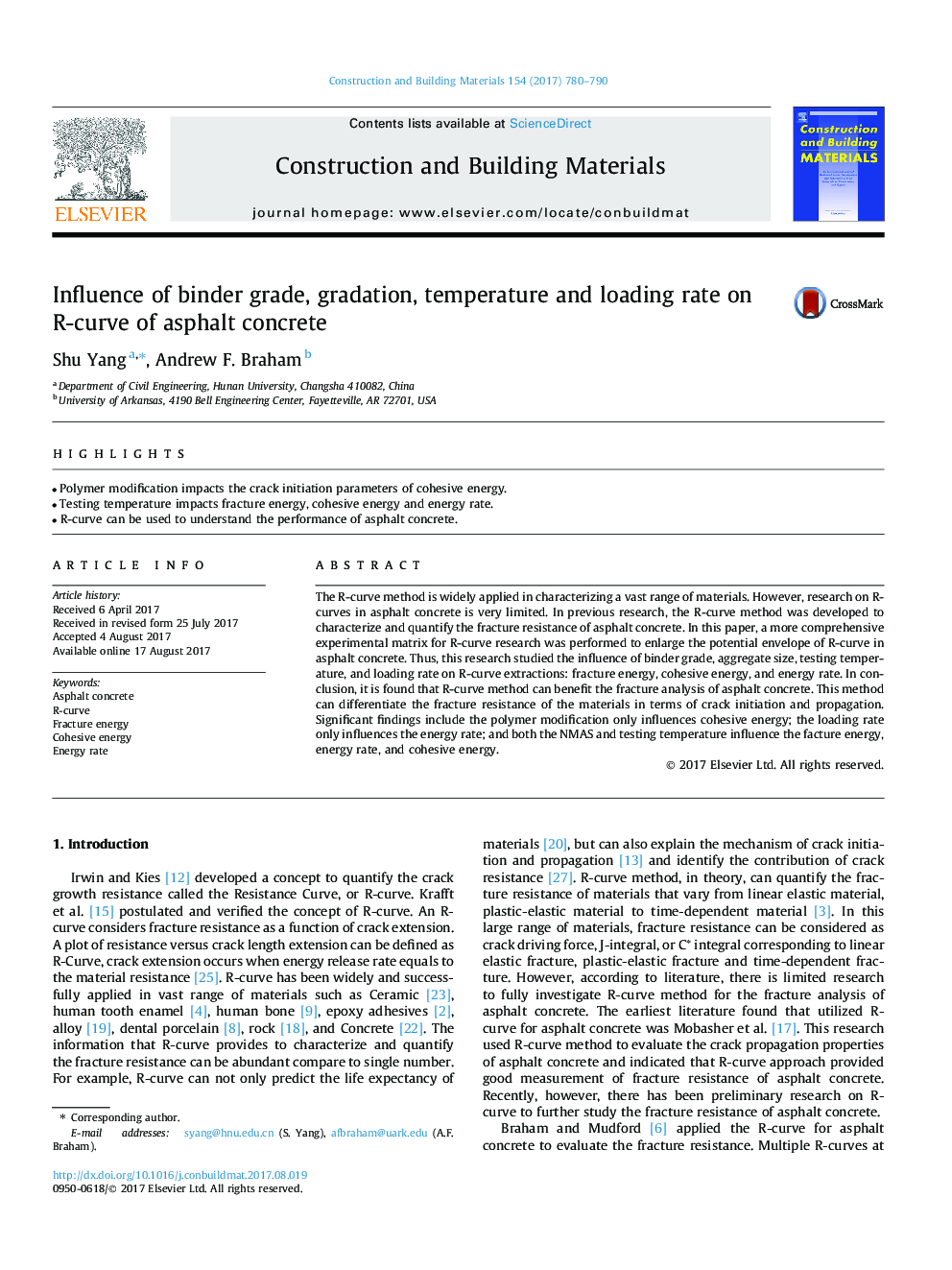| کد مقاله | کد نشریه | سال انتشار | مقاله انگلیسی | نسخه تمام متن |
|---|---|---|---|---|
| 6480207 | 1428752 | 2017 | 11 صفحه PDF | دانلود رایگان |
- Polymer modification impacts the crack initiation parameters of cohesive energy.
- Testing temperature impacts fracture energy, cohesive energy and energy rate.
- R-curve can be used to understand the performance of asphalt concrete.
The R-curve method is widely applied in characterizing a vast range of materials. However, research on R-curves in asphalt concrete is very limited. In previous research, the R-curve method was developed to characterize and quantify the fracture resistance of asphalt concrete. In this paper, a more comprehensive experimental matrix for R-curve research was performed to enlarge the potential envelope of R-curve in asphalt concrete. Thus, this research studied the influence of binder grade, aggregate size, testing temperature, and loading rate on R-curve extractions: fracture energy, cohesive energy, and energy rate. In conclusion, it is found that R-curve method can benefit the fracture analysis of asphalt concrete. This method can differentiate the fracture resistance of the materials in terms of crack initiation and propagation. Significant findings include the polymer modification only influences cohesive energy; the loading rate only influences the energy rate; and both the NMAS and testing temperature influence the facture energy, energy rate, and cohesive energy.
Journal: Construction and Building Materials - Volume 154, 15 November 2017, Pages 780-790
